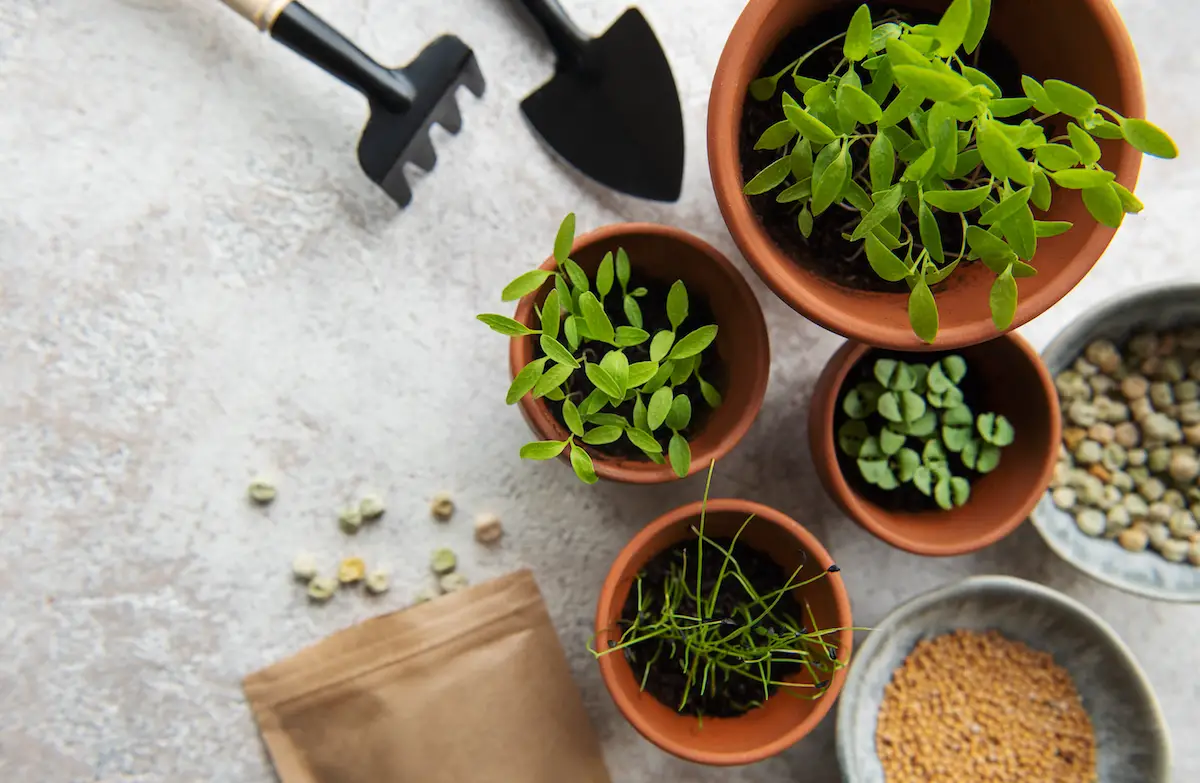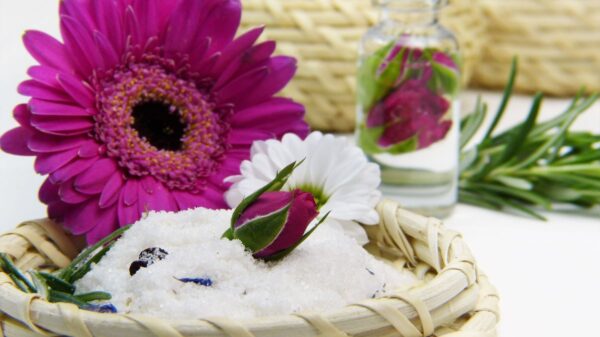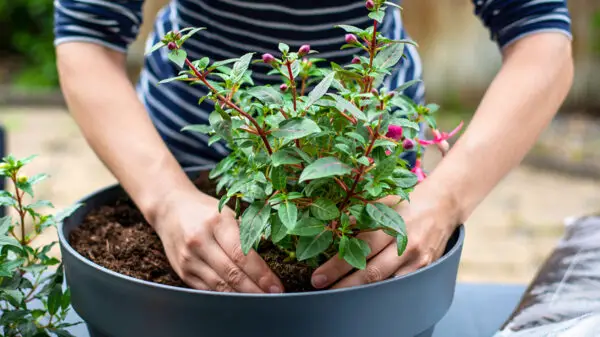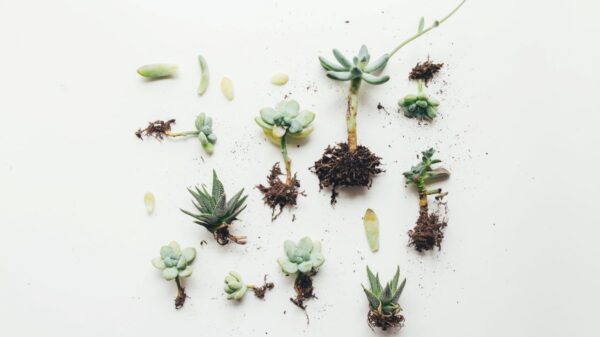Tips For How To Extend The Growing Season In Your Microgarden
If you’re passionate about gardening and have a microgarden, you know that the growing season is a precious time when your plants thrive and produce bountiful harvests. However, as the seasons change, colder temperatures can pose a challenge to gardeners who want to continue their cultivation year-round. The good news is that with the right strategies, you can extend the growing season and enjoy fresh produce throughout the year. In this comprehensive guide, we’ll explore various methods, tips, and techniques to extend the growing season in your microgarden for year-round cultivation. Here is an overview of everything you will learn in this article:
- Tips for extending the growing season
- Best microgarden plants for year-round cultivation
- How to grow a microgarden during winter
- Benefits of extending the growing season in my microgarden
Now let’s dive in so you can get your green thumb to work!

Tips for Extending the Growing Season
When it comes to micro gardening, there are several great tips to follow. However, when it comes to year-round cultivation of a micro garden, there are a few things to keep in mind.
- Embrace Microclimates to Your Advantage. In a micro-garden, different areas may have distinct microclimates with varying exposure to sunlight, wind, and temperature. Take advantage of these microclimates to grow plants that thrive in specific conditions. For example, place heat-loving plants in sunnier spots and reserve shadier areas for cool-weather crops. By using microclimates strategically, you can maximize the potential of your garden throughout the year.
- Utilize Season Extenders. Season extenders, such as row covers, cold frames, and cloches, are invaluable tools for protecting your plants from cold temperatures and frost. These structures create a mini-greenhouse effect, trapping warmth and shielding your plants from harsh elements. Using season extenders allows you to start planting earlier in spring and extend the growing season well into fall.
- Mulch for Temperature Regulation. Mulching is a simple yet effective technique to regulate soil temperature in your micro-garden. Applying a thick layer of organic mulch around your plants helps retain heat during colder days and keeps the soil cool during hot spells. Additionally, mulch helps retain moisture, reducing the frequency of watering and promoting healthier root systems.
- Choose Cold-Resistant Varieties. Opt for cold-resistant plant varieties that can withstand lower temperatures and even frost. Many vegetables, such as kale, spinach, and Brussels sprouts, thrive in cooler weather. By selecting the right plant varieties, you can ensure a continuous harvest even when the mercury drops.
- Install a Greenhouse. If you’re serious about year-round cultivation, consider investing in a greenhouse for your micro-garden. Greenhouses provide a controlled environment where you can grow a wide variety of plants regardless of the external weather conditions. They offer protection from cold, wind, and pests, enabling you to cultivate sensitive plants that wouldn’t survive outside.
- Implement Crop Rotation. Crop rotation is a smart practice that involves changing the location of your crops each season. This technique helps prevent the buildup of pests and diseases in the soil, resulting in healthier plants and better yields. By rotating your crops, you also give the soil time to recover and replenish its nutrients, ensuring the long-term sustainability of your micro-garden.
Best Microgarden Plants For Year-Round Cultivation
Several plant varieties are well-suited for year-round cultivation, making them excellent choices for gardeners looking to enjoy fresh produce regardless of the season. Here are some top picks:
- Kale: This nutrient-packed leafy green thrives in cooler temperatures and can withstand frost, making it a reliable choice for year-round cultivation.
- Spinach: Spinach is another cold-hardy vegetable that can be grown throughout the year, providing a continuous supply of nutritious greens.
- Chard: Chard, also known as Swiss chard, is a resilient green that can tolerate both cold and hot weather, making it suitable for year-round planting.
- Lettuce: Various lettuce varieties, such as romaine, butterhead, and leaf lettuce, can be grown successively to ensure a constant supply of fresh salad greens.
- Carrots: Carrots are cool-season vegetables that can be left in the ground during winter, allowing you to harvest them whenever needed.
- Broccoli: Broccoli is a cold-resistant vegetable that thrives in the cooler months, providing nutritious florets for your meals.
- Cabbage: Cabbage is a versatile vegetable that can be grown in both spring and fall, extending your harvest season.
- Herbs: Many herbs, such as thyme, oregano, and parsley, can be grown indoors or in protected outdoor spaces, allowing you to have fresh herbs year-round.
- Microgreens: These tiny, nutrient-dense greens are perfect for indoor gardening and can be harvested within a few weeks, making them ideal for year-round cultivation.
- Garlic: Planting garlic in the fall allows it to overwinter and develop into full bulbs by the following summer, providing a bountiful harvest.
Remember to choose varieties that are well-suited to your local climate and micro-garden conditions to ensure successful year-round cultivation. With proper care and attention, these plants will reward you with a continuous supply of fresh, homegrown produce throughout the year.

Growing A Microgarden During Winter Season
Growing a micro-garden during winter can be a rewarding and invigorating experience for avid gardeners. While the colder months present unique challenges, with the right approach, it is entirely possible to keep your garden flourishing. Utilizing season extenders like cold frames, row covers, and cloches can provide a protective shield against frost and low temperatures, allowing you to continue cultivating cold-hardy vegetables and herbs.
Additionally, embracing indoor gardening techniques and using grow lights can enable you to grow a variety of herbs and leafy greens right in the comfort of your home. By carefully selecting winter-appropriate plant varieties and ensuring proper soil preparation and maintenance, you can extend the growing season in your micro-garden and savor the joy of fresh produce even when snow blankets the ground.
The winter micro-garden offers a unique opportunity for gardeners to experiment with a variety of cool-weather crops that thrive in the chilly climate. Vegetables like kale, spinach, carrots, and Brussels sprouts can endure the cold and even benefit from its effects, becoming sweeter and more flavorful. Employing techniques like mulching and crop rotation can enhance the resilience of your plants, keeping them healthy throughout the season. Moreover, exploring the world of microgreens and sprouts can add a burst of nutrition and flavor to your winter dishes. By creating a cozy and nurturing environment for your micro-garden, you can stay connected to nature during the colder months and maintain the joy of gardening year-round.
Benefits of Extending Growing Season Of Microgarden
Extending the growing season in a micro-garden offers a plethora of benefits for enthusiastic gardeners. Firstly, it allows for a more continuous and abundant harvest, providing a steady supply of fresh, homegrown produce throughout the year. By utilizing season extenders like cold frames, row covers, and cloches, gardeners can protect their plants from cold temperatures and frost, ensuring they thrive well into fall and even throughout winter. This means enjoying the taste of freshly picked vegetables and herbs even when traditional outdoor gardening would be impossible.
Additionally, year-round cultivation promotes self-sufficiency and sustainability, as gardeners become less reliant on store-bought produce and reduce their carbon footprint. It also fosters a deeper connection to nature and a greater appreciation for the changing seasons, making the micro-garden a source of joy, nourishment, and a year-round sanctuary for green enthusiasts.
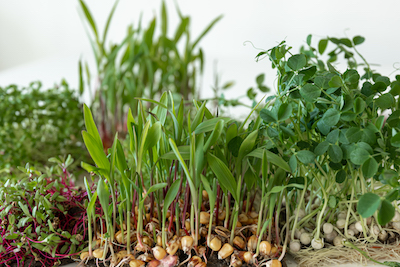
The Bottom Line
Extending the growing season in your micro-garden for year-round cultivation is a rewarding endeavor that requires careful planning and the right techniques. By leveraging microclimates, using season extenders, and choosing cold-resistant varieties, you can ensure a continuous harvest even during colder months. Consider implementing crop rotation and investing in a greenhouse to further enhance your gardening experience. With these strategies and your dedication as a gardener, you can enjoy the fruits of your labor throughout the entire year, making your micro-garden a true haven of green and life.
Related Questions
How can I protect my plants from frost in a micro-garden?
To protect your plants from frost in a micro-garden, you can use season extenders like cloches and row covers. Additionally, mulching around your plants will help retain heat and shield them from freezing temperatures.
Is a greenhouse necessary for year-round cultivation in a micro-garden?
While a greenhouse is not mandatory, it significantly enhances your ability to achieve year-round cultivation. A greenhouse provides a controlled environment that protects plants from external weather conditions, making it easier to grow a wide range of crops throughout the year.
How often should I rotate crops in my micro-garden?
Crop rotation is generally done on a yearly basis, with each crop being grown in a different location each year. This practice helps maintain soil health and prevent the buildup of pests and diseases.
Can I grow fruit trees in a micro-garden year-round?
Growing fruit trees in a micro-garden year-round can be challenging, especially in colder climates. However, with proper care and protection during winter, some fruit trees can survive and produce fruit in micro-gardens.
Is it possible to grow herbs indoors in a micro-garden?
Yes, it is possible to grow herbs indoors in a micro-garden. By placing pots near windows or under artificial grow lights, you can provide the necessary sunlight for healthy herb growth.


